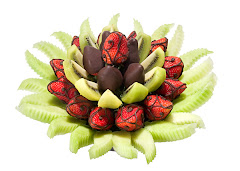The North American Cranberry
Thanksgiving is over, but for the next month, fresh cranberries will continue to be easily found in grocery stores and gourmet food emporiums. And that is good news!
Cranberries are one of the healthiest fruits that are available to us. Ok, so they may make you pucker up a little (is that a bad thing?) due to their tartness, but they are delicious and so nutritious. Packed with nutrients like antioxidants and other natural compounds, cranberries are a great choice for the health conscious consumer. In recent years we have even been able to enjoy sweetened, dried cranberries all year round.
Along with blueberries and the Concord grape, cranberries are one of 3 native North American fruits that are commercially grown.
According to the Cape Cod Cranberry Growers Association, “The cranberry helped sustain Americans for hundreds of years. Native Americans used cranberries in a variety of foods, the most popular was pemmican - a high protein combination of crushed cranberries, dried deer meat and melted fat - they also used it as a medicine to treat arrow wounds and as a dye for rugs and blankets.”
Contrary to popular TV commercials, cranberry vines do not grow in underwater. They grow in bogs and can live for a very long time. Some vines in Massachusetts are over 150 years old and they continue to produce fruit to this day.
Here’s a recipe for a delicious Cranberry Bread from the Cape Cod Cranberry Growers Association.
Servings: 1 Loaf
Ingredients:
1/2 C. Butter
1 Tbs. Grated Orange Peel
3 Large Eggs, Beaten
2 1/2 C. Flour
1 Tsp. Baking Soda
2 C. Fresh or Frozen Cranberries, Chopped
1 C. Sugar
1Tsp. Vanilla
3/4 C. Buttermilk
1/4 Tsp. Salt
3/4 C. Pecans, Chopped
Method:
Preheat oven to 350°. Spray bottom only of 9" X 5" loaf pan with cooking spray. Beat butter, sugar, orange peel and vanilla in a large bowl until light and fluffy. Add eggs, mixing well. Combine flour, baking soda and salt, add to creamed mixture alternately with buttermilk, beating at low speed just until blended. Fold cranberries and nuts into batter. Turn into prepared pan, spreading evenly. Bake until wooden pick inserted in center comes out clean, about 50 to 60 minutes. Cool slightly in pan. Remove from pan and cool completely on wire rack.





